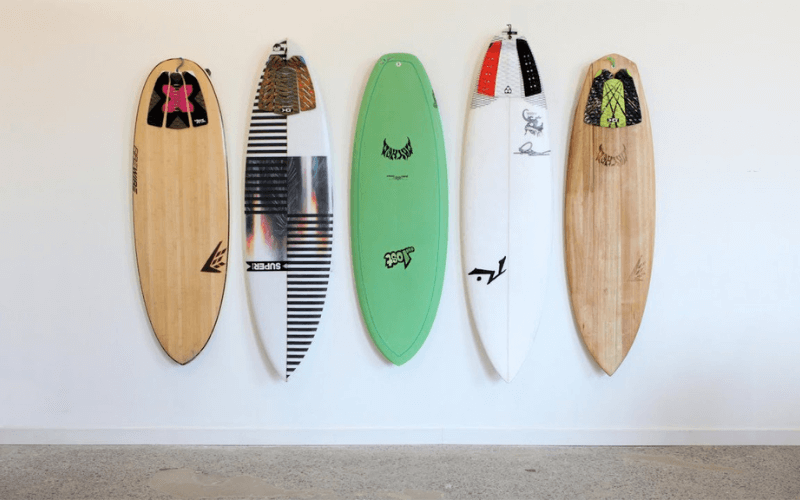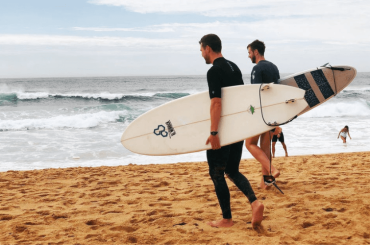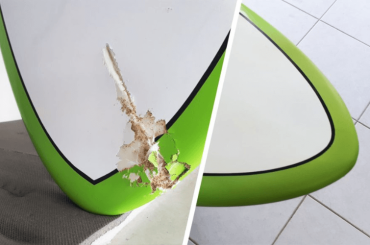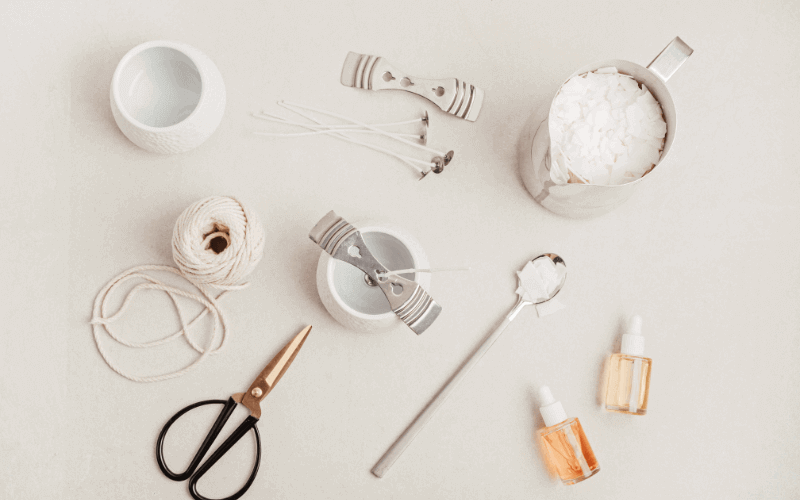It can be a challenge to figure out the best way to hang a surfboard on a wall. But, with the right tools and know-how, it can be done quickly and easily.
This blog post will show you the best way to hang your surfboard on a wall so that it looks great and is safe from damage. Keep reading for our top tips and tricks!
How to hang a surfboard on a wall?
There are a few things you need to take into consideration when hanging a surfboard on a wall.
- First, decide where you want to hang your surfboard. It is important to consider both the height and the width of the surfboard when deciding on a location.
- The second thing to consider is the wall space you have available. If you have limited wall space, you may want to consider using a smaller surfboard or hanging it in an alternate location such as above a doorframe.
- Lastly, you will need to make sure that the hangers you use are strong enough to support the weight of the surfboard.
Once you have chosen the right hangers, it’s time to start hanging your surfboard!
- Start by finding the center point of the surfboard and marking it with a pencil.
- Then, hold the hanger up to the mark and use a drill to create pilot holes for the screws.
- Next, insert the screws into the pilot holes and tighten them until they are snug. Be careful not to overtighten the screws, as this could strip them or damage the surfboard.
- Finally, hang your surfboard on the wall and enjoy your handiwork!
What type of wall can you hang a surfboard on?
When choosing a wall to hang your surfboard on, make sure that the wall is strong enough to support the weight of the board. Be careful not to damage the surfboard when hanging it on the wall.
1. Stud wall:
The best type of wall to hang a surfboard on is a stud wall. This type of wall is made of wooden studs that are spaced evenly apart and covered with drywall.
2. Brick wall:
Another type of wall that can be used to hang a surfboard is a brick wall. This type of wall is made of bricks that are held together with mortar. The spaces between the bricks provide the perfect place to insert hooks or nails to hang the surfboard.
3. Concrete wall:
The last type of wall that can be used to hang a surfboard is a concrete wall. This type of wall is made of concrete that has been poured into a mold and allowed to harden.
The best way to hang a surfboard on a concrete wall is by using adhesive hooks or nails.
4. Drywall:
A drywall is not always recommended for hanging a surfboard. This type of wall is made of gypsum board that is covered with paper or fabric.
The drywall is not strong enough to support the weight of a surfboard and can easily be damaged by the hooks or nails used to hang the board.
Did You Know: How to sit on a surfboard?
How to find the studs on your wall?
There are a few different ways that you can find studs on your wall.
1- Use a stud finder:
The first way is to use a stud finder. This is a tool that you can purchase at most hardware stores and home improvement centers. It uses magnets to find the metal studs in your walls.
2- Use a small nail:
Another way to find studs is by using a small nail. You can hammer the nail into the wall until you feel it hit something solid. This is likely to be a stud.
3- Use a piece of string:
If you are worried about damaging your walls, you can also try using a piece of string. Tie one end of the string to the nail and then hold the other end up to your ear.
Slowly move the nail around until you hear a tapping sound. This sound will be coming from the stud behind the wall.
4- By tapping on the wall:
Another way to find studs is by tapping on the wall and listening for a solid sound. You can also look for small holes in the wall that may indicate where nails or screws have been driven into the studs.
If you’re not sure where to start, it’s usually best to begin in a corner of the room. Once you know where the studs are, you can then begin to hang your surfboard on a wall.
How to use anchors and screws to hang your surfboard?
- Start by finding the center of your surfboard. You can do this by measuring from the nose to the tail and then dividing that number in half. Once you have found the center, mark it with a pencil or pen.
- Next, find the centers of your anchors or screws. To do this, simply measure the distance between them and then divide that number in half.
- Now, align the center of your surfboard with the center of one of your anchors or screws. Once you have done this, take your drill and drill a hole through the center of your surfboard and into the anchor or screw.
- Once you have drilled a hole through the center of your surfboard and into the anchor or screw, take your screw and screw it into the hole. Be sure to screw it in tight so that it is secure. This will ensure that your surfboard is properly safe and will not fall off the wall.
- Repeat steps 3 and 4 for the other anchor or screw.
Tips for preventing your surfboard from falling off the wall?
- Make sure the wall is strong enough to support the weight of your surfboard.
- Use the proper size and type of wall hook for your surfboard.
- Make sure the wall hook is properly installed and secure.
- Use a tether or strap to secure your surfboard to the wall hook.
- Inspect your wall hooks and surfboard regularly to ensure they are secure.
- If possible, use more than one screw or nail per side of your surfboard to help distribute the weight.
- Avoid hanging your surfboard in direct sunlight as this can cause the foam to warp or discolor over time.
- Also, avoid hanging your surfboard near windows or doors where it could be accidentally knocked off the wall.
- Store your surfboard in a safe place when not in use to prevent it from being damaged or stolen.
Additional accessories that can help you display your surfboard?
Some of the additional accessories that can help you display your surfboard are:
- Wall mounts: These are hooks or brackets that can be used to securely fasten your surfboard to the wall.
- Racks: These are shelves and stands that can be used to display your surfboard out in the open and on full display.
- Cases and covers: These will help protect your surfboard when not in use, whether you are storing it indoors or outdoors.
- Storage bags: These are designed to protect your surfboard when traveling or while in storage. They can be used to keep your surfboard clean and dry and can also help prevent damage from UV light or saltwater exposure.
- Surfboard leashes: These are straps or cords that attach from your surfboard to your ankle, wrist or body. They help keep your surfboard close by if it does come off of the wall or rack.
- Surfboard wax: Surfboard wax is another must-have accessory for anyone who loves to surf. It helps provide better traction and control on your surfboard and can also help prevent your surfboard from slipping off of the wall or rack.
With the right accessories, it can be easy and convenient to display your surfboard and show off your love for this sport.
FAQs – How to hang a surfboard on a wall
Is it better to store surfboards vertical or horizontal?
There is no definitive answer to this question, as there are both pros and cons to both vertical and horizontal storage.
On the one hand, storing surfboards vertically may be more space-efficient and can help prevent damage from dings and scratches. However, storing surfboards horizontally may provide better airflow and prevent warping over time.
Ultimately, the best solution will depend on your specific needs and preferences. So whether you decide to store your surfboards vertically or horizontally, just be sure to take good care of them to keep them in peak condition for years to come!
How far apart should wall surf racks be?
There is no definitive answer to this question, as there are many factors that can influence how far apart wall surf racks should be.
Some important considerations might include the height of the wall, the size and weight of your surfboard and the overall layout of your storage space.
Ultimately, you will need to experiment with different configurations until you find one that works well for you.
One option when determining the appropriate spacing between wall surf racks is to start by measuring out where you want them on your wall.
How do you make a freestanding surfboard rack?
- The first step in making a freestanding surfboard rack is to gather the materials that you need. You will need some 2x4s, two sheets of plywood and some drywall screws or lag screws depending on what type of wood you use.
- Then start by cutting the lengths of the 2x4s to the size that you need. The length will depend on how many surfboards you want to store, as well as how wide your boards are.
- To attach the 2x4s, you will need to measure and cut the sheets of plywood so that they fit between each 2×4. If your surfboards are wider than the width of a piece of plywood, you can use two pieces to support them instead.
- After you have measured and cut the plywood, attach it to the 2x4s using either drywall or lag screws. You may want to pre-drill holes to prevent the wood from splitting. To make sure that your surfboards are secure, you can also add a small lip around the edges of each 2×4 using some scrap pieces of wood.
- Once your rack is built, you are ready to start loading up your surfboards! This rack will serve as a great storage solution for both shortboards and longboards, so it should be able to suit the needs of any surfer.
Final words:
If you want to add a personal touch to your home and show off your hobbies, hanging a surfboard on the wall is a great way to do it.
There are a few ways that you can hang your surfboard on the wall. The most important thing is to make sure that you use the appropriate hardware and anchors for the type of wall that you have.
With a little bit of effort, you can display your board in a way that looks great and is also safe.





